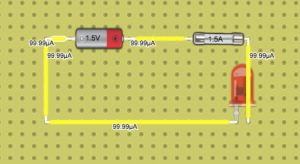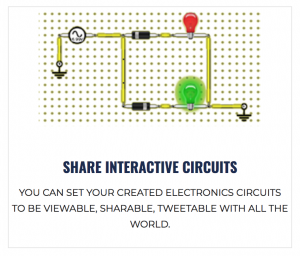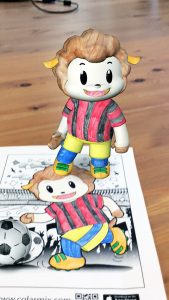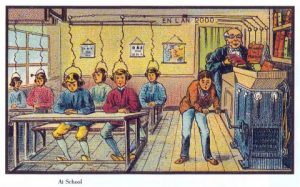Question: Creating digital video is now more available and more efficient than it was when the Jasper series were initially developed. Briefly, if given the opportunity, what kind of mathematical or science adventure might you design? Why? Pay attention to your underlying assumptions about teaching and learning regarding your design and your definition of technology. How would instruction in this adventure help to address misconceptions in math or science for some students?
Answer: If I could create any sort of adventure, it would definitely be a combination of the more difficult math and science concepts found the grade 5 Alberta curriculum. More specifically, these concepts would involve:
Math:
– 2-digit by 2-digit multiplication
– solving equations with one variable
– 3-digit by 1-digit division
Science:
– building a variety of circuits using discovery methods
– reading electricity meters
In creating an adventure environment for this, I feel it would be highly engaging to have an escape room type scenario. For those of you unfamiliar with the escape room concept, you can watch a short explanation video here. This could be completed by actually building the escape room, or by having fictional characters in a video series. Lately a number of my students have been raving about their time in an escape room, and some of their highlights have been all about the learning that occurred during their unsuccessful escape attempts.
The goal would be for this scenario to follow the “Guided Generation” model, outlined by the Cognition and Technology Group at Vanderbilt (1992a). In this model, students are put in relatively complex situations where all of the goals for completion are not explicitly specified. One of the main keys to successfully using this model is scaffolding learning appropriately, while still giving opportunity for students to generate their own understanding.
While the theme of the escape room could always be different, it could include elements that required students to complete circuits to open locks. They could potentially repair a radio and send a message out. The opportunities are endless, both in their possibilities and in their difficulty. It provides opportunities for students to solve a problem in a variety of ways. Which lends to different learning styles, and gives learners a chance to re-enter the room and try to be successful in a different way.
While the concepts used would require some pre-teaching, this type of scenario could show students how the math and science isn’t just theoretical or busy-work. Especially when it comes to the more difficult multiplication problems, I often get the complaint-question “when will we ever do this in real life, we have cell phones now.” There also seems to be a misconception with science that what is learned at school cannot be further developed outside of the classroom. While I think this may come from teachers’ well intended cautions about playing with electricity and chemicals, it can often lead to an unfortunate stifling of students’ passion for learning. This escape room type adventure could both illuminate the usefulness of learned concepts, as well as demonstrate its different applications.
The escape room model could also be sprinkled in throughout different lessons.
For Example:
- 15 minutes in the room before any electricity teaching
- 3 Classes on series and parallel circuits
- 30 minutes in the room where students should figure out the first electrical challenge
- 2 math classes on 3 by 1 division (and time for circuit related questions)
- 30 more minutes in the room where they try to apply these skills
This would let students be introduced to circuits/division without any teaching. During the lessons, hopefully a lightbulb would go off in which they realize this is the clue for a specific part of the room.
My ideas aren’t entirely solidified yet, but this is what I’ve been mulling over this past week. I feel it would build upon the quality ideas in the Jasper Research while also pulling in more recent PBL theories and best practices.
Cognition and Technology Group at Vanderbilt (1992a). The Jasper experiment: An exploration of issues in learning and instructional design. Educational Technology, Research and Development, 40(1), 65-80.
Park, K., & Park, S. (2012). Development of professional engineers’ authentic contexts in blended learning environments. British Journal of Educational Technology, 43(1), E14-E18.
Hasselbring, T. S., Lott, A. C., & Zydney, J. M. (2005). Technology-supported math instruction for students with disabilities: Two decades of research and development.













